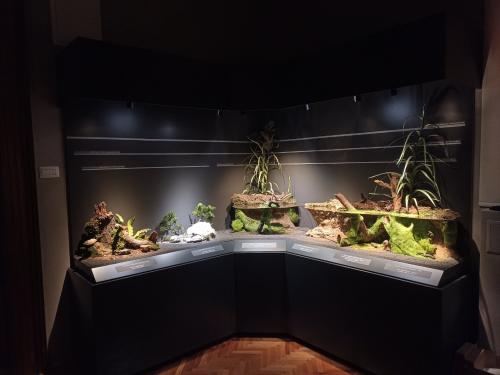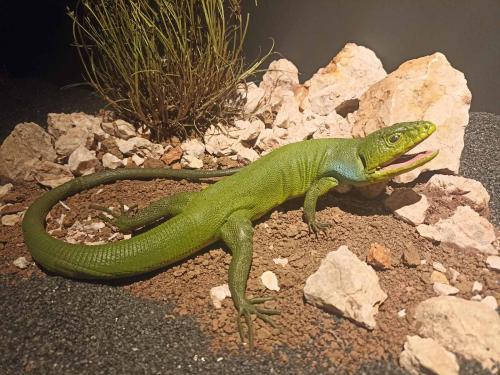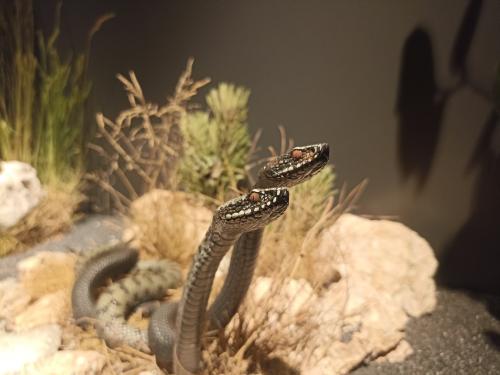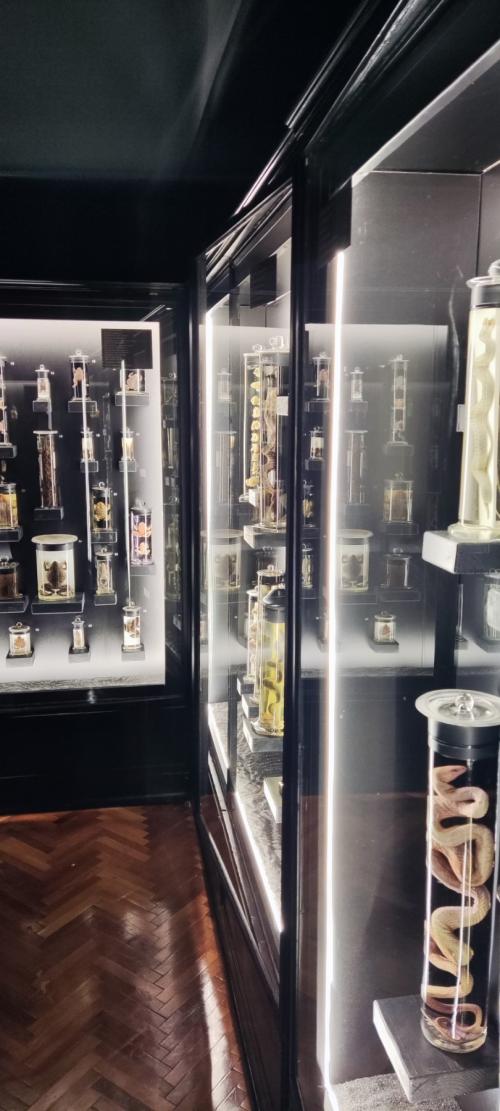You are here
NEW PERMANENT EXHIBITION "AMPHIBIANS AND REPTILES OF BOSNIA AND HERZEGOVINA"
Dear visitors,
We are proud to announce the new permanent exhibition "Amphibians and Reptiles of Bosnia and Herzegovina", which will be opened to the public on Thursday, February 1, 2024. It is the first time in the 136 years since the founding of the Museum that all species of herpetofauna discovered so far in their natural habitats will be presented in one place.
Bosnia and Herzegovina is the center of European herpetofauna diversity, which consists of at least 53 autochthonous species: 9 tailed amphibians, 13 frogs, 14 snakes, 4 turtles and 13 lizards. Almost half of the species (40%) show a certain level of endemism, of which the most common endemics are the Dinarides or the southern part of the Balkan Peninsula. Bosnia and Herzegovina stands out as a region of special importance for venomous snakes (Important Viper Areas - IVA), for petrophilic communities of lizards and as a habitat for evolutionarily unique species such as the olm.
The exhibition "Amphibians and Reptiles of Bosnia and Herzegovina" shows all species in their natural habitats on the territory of Bosnia and Herzegovina that were discovered up until 2024. Species are depicted in a completely realistic manner, including variation and sexual dimorphism within them. Most (75%) of the exhibited species were created by 3D scanning, modeling and printing, while the rest were represented by taxidermy mounts. Selected samples from the herpetological collection were scanned using a 3D scanner, then "revived" by the remodeling process. In this way, the animals in the exhibition are actually "revived" models of samples from the ZMBiH collection. Discover such diverse groups of animals and very interesting exhibits: from the smallest European vertebrate (the short-legged lizard) to the fourth largest reptile in the world (the seven-striped lizard).
Along with them, you can also see originally preserved animals in the so-called vials, i.e. containers with scientific samples, which are part of a rich herpetological collection, as well as extremely rare snake and salamander fossils. The exhibition is complemented by bilingual legends, an interactive (tactile) corner, as well as a specially developed App for those who want to learn more.
The author of the exhibition is Adnan Zimić, MA.
The exhibition was supported by the BiH Ministry of Civil Affairs, the FBiH Ministry of Culture and Sports, the Sarajevo Canton Ministry of Culture and Sports, Centar Municipality, Sarajevo and UNDP. We owe special thanks to the Fab Lab partners, who are responsible for the design and execution of the models used in the exhibition.



